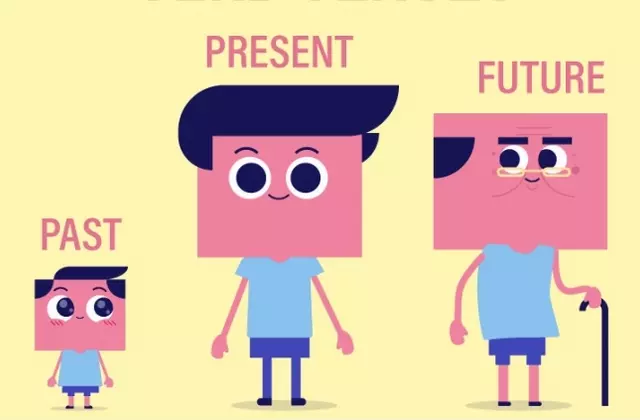Ever wonder whether Japanese language has Present, Past and Future form or not? The answer is Actually YES! However, present tense is actually being used for future tense in a habitual way. On this post we will have a look on Japanese present past future tense.

to eat – たべる (taberu)
| Past | Present | Future |
|---|---|---|
| たべました (tabemashita) i ate | たべています (tabeteimasu) i am eating | たべます (tabemasu) i will eat |
to eat – たべる (taberu) is dictionary form of the verb word.
To make it past replace ru with mashita. (informal is tabeta)
To make it present replace ru with te form + imasu.
To make it future replace ru with masu.
Lets see some more examples:
to sleep – ねる (neru)
| Past | Present | Future |
|---|---|---|
| ねました (nemashita) i slept | ねています (neteimasu) i am sleeping | ねます (nemasu) i will sleep |
to sleep – ねる (neru) is dictionary form of the verb word.
To make it past replace ru with mashita. (informal is neta)
To make it present replace ru with te form + imasu.
To make it future replace ru with masu.
to drink – のむ (nomu)
| Past | Present | Future |
|---|---|---|
| のみました (nomimashita) i drank | のんで います (nondeimasu) i am drinking | のみます (nomimasu) i will drink |
You may have already noticed above のむ (Nomu) is slightly different for Present form. This is a rule/exception. However, we will not go into deep explanation on this post. For now just remember it and use it whenever you have the chances.
to see – みる (miru)
| Past | Present | Future |
|---|---|---|
| みました (mimashita) i saw | みで います (miteimasu) i am seeing | みます (mimasu) i will see |
to see – みる (miru) is dictionary form of the verb word.
To make it past replace ru with mashita. (informal is mita)
To make it present replace ru with te form + imasu.
To make it future replace ru with masu.
to listen – きく (kiku)
| Past | Present | Future |
|---|---|---|
| ききました (kikimashita) i listened | きいで います (kiiteimasu) i am listening | ききます (kikimasu) i will listen |
to listen – きく (kiku) is dictionary form of the verb word.
To make it past replace u with imashita. (informal is kikita)
To make it present replace ku with ite form + imasu.
To make it future replace u with imasu.
Here again for listen, it works in a different way. This is rule/exception.
How are these rules work?
In order to conjugate the dictionary form of the verb you have to have a solid understanding with the verb groups. There are three verb groups in Japanese language.
Well so.. enough of the learning today. Now you know that there are actually Japanese present past future tense. Try above words in your daily life whenever you wants to.
